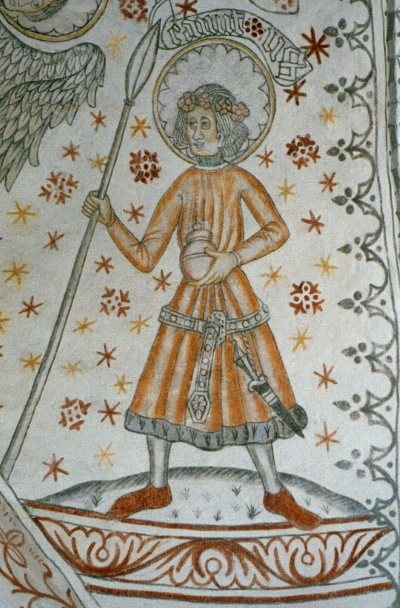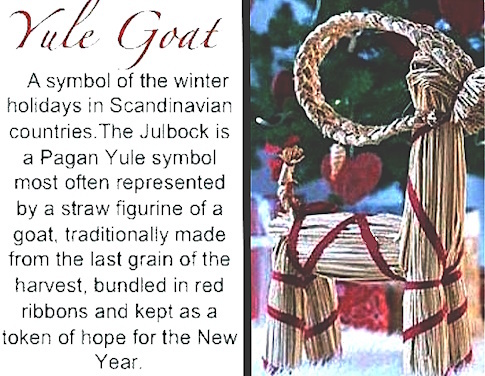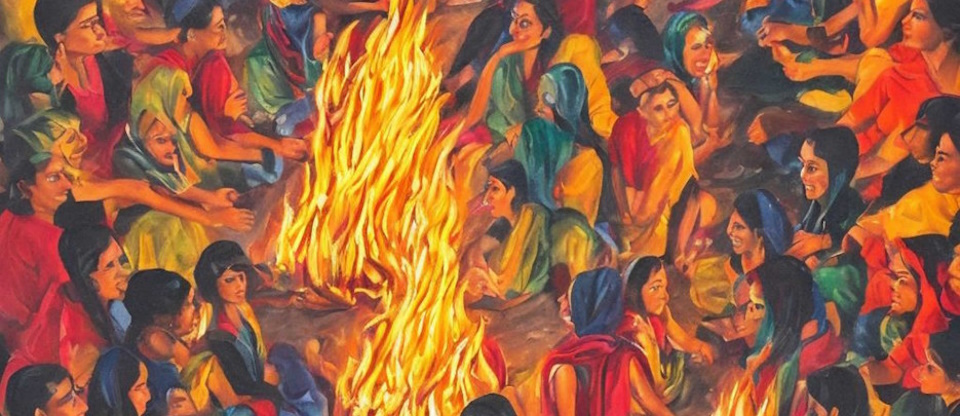13th January - Saint Knut's Day & Lohri
Written by Anne Newman 9th January 2020 additions 2023

This photo is taken from en.wikipedia.org - St Knut's Day
Tjugondag jul - Twentieth Day Yule, or Tjugondag Knut - Twentieth Day Knut, or Knutomasso, or Nuutinpäivä - Knut'sDay, in English, Saint Knut's Day.
På tjugondag Knut körs julen ut! - On the twentieth day Christmas is driven out!
Knutdagen, the Day of Knut, is said to have got its name for the Danish Duke Knut Lavard (1096 – 1131). He was murdered just outside Ringstedt in Denmark, on the 7th January in the year 1131, by his cousin Magnus. Magnus viewed Knut as a rival, well-positioned to rise to power as the successor of King Nils (the father of Magnus).
Knut was canonized and declared a saint near the end of the 17th century. The Christmas period was extended by one week and the week of Knut now lasted from 7th to 13th January.
Tjugonday Knut is celebrated only in Sweden, Norway and Finland. In most other countries Christmas is considered well and truly over by then.
In Sweden it is celebrated by taking out the Christmas tree and dancing around it. Any remaining edible decorations are happily eaten. The feast held during this event is called a Knut's party (Julgransplundring, literally"Christmas tree plundering"). Then Christmas is driven outby throwing the Christmas tree out.
It is also customary to knock on the walls to scare out any Jultomten - Christmas goats - who are hiding in the house!
Sometimes there is a man dressed as “Knut” in a kind of crazy ragged costume who helps to sweep out Christmas. Many places in Sweden had old pagan traditions linked to this day. Children would dress up in costumes and wear masks. They would go from door to door carrying a male doll made of straw, the Knut’s Gubbe (Old Man Knut or Knot, depending on how you choose to translate it). The idea is to be invited in for treats and a drink but stay in role without your everyday identity being revealed. Dolls of straw, made to resemble an old Crone, were carried around as well and pose a direct link to the older Grandma Goddess tying her cosmic knot and so a much older, pre-Christian festival lurks behind the feast day of a Christian saint

In Finland on Nuutinpäivä, a tradition was that young men dressed as goats (Finnish: Nuuttipukki) would visit houses. Usually the dress was an inverted fur jacket, a leather or birch bark mask, and horns. Unlike Santa Claus, Nuuttipukki was a scary character who reminds me of the German Krampus. The men dressed as Nuuttipukki wandered from house to house, came in, and typically demanded food from the household and especially left over alcoholic beverages. In Finland the Nuuttipukki tradition is still kept alive in some areas of South West Finland.
A proverb from Noormarkku says:
Hyvä Tuomas joulun tua, paha Knuuti poijes viäor - Good Thomas brings Christmas, evil Knut takes it away.
St Thomas’ Day is 21st December. It would appear there had to be a balance of good and evil.
Another source of information is All things Nordic
Lohri
Coincidentally Lohri festival, on 13th January, in India is believed to be the end of the winter season and marks the beginning of longer days. From - Lohri India
To mark the Lohri, people get dressed in colourful clothes. The day is usually celebrated with the ancient tradition of lighting bonfires. families will gather to sing, dance and share winter snacks like rewaris, chikkis and til laddoos to celebrate the day. Gifts are also exchanged in the festival which is always full of rejoicing and music.
Give sweets and coins to kids during the day. In the morning on Lohri, kids traditionally sing songs as they knock on doors around their neighborhood. Wish them a happy Lohri, and hand out candy, snacks, or a bit of money. Be sure to join the festivities! Not answering the door or refusing to hand out treats is considered miserly. How to Celebrate Lohri






